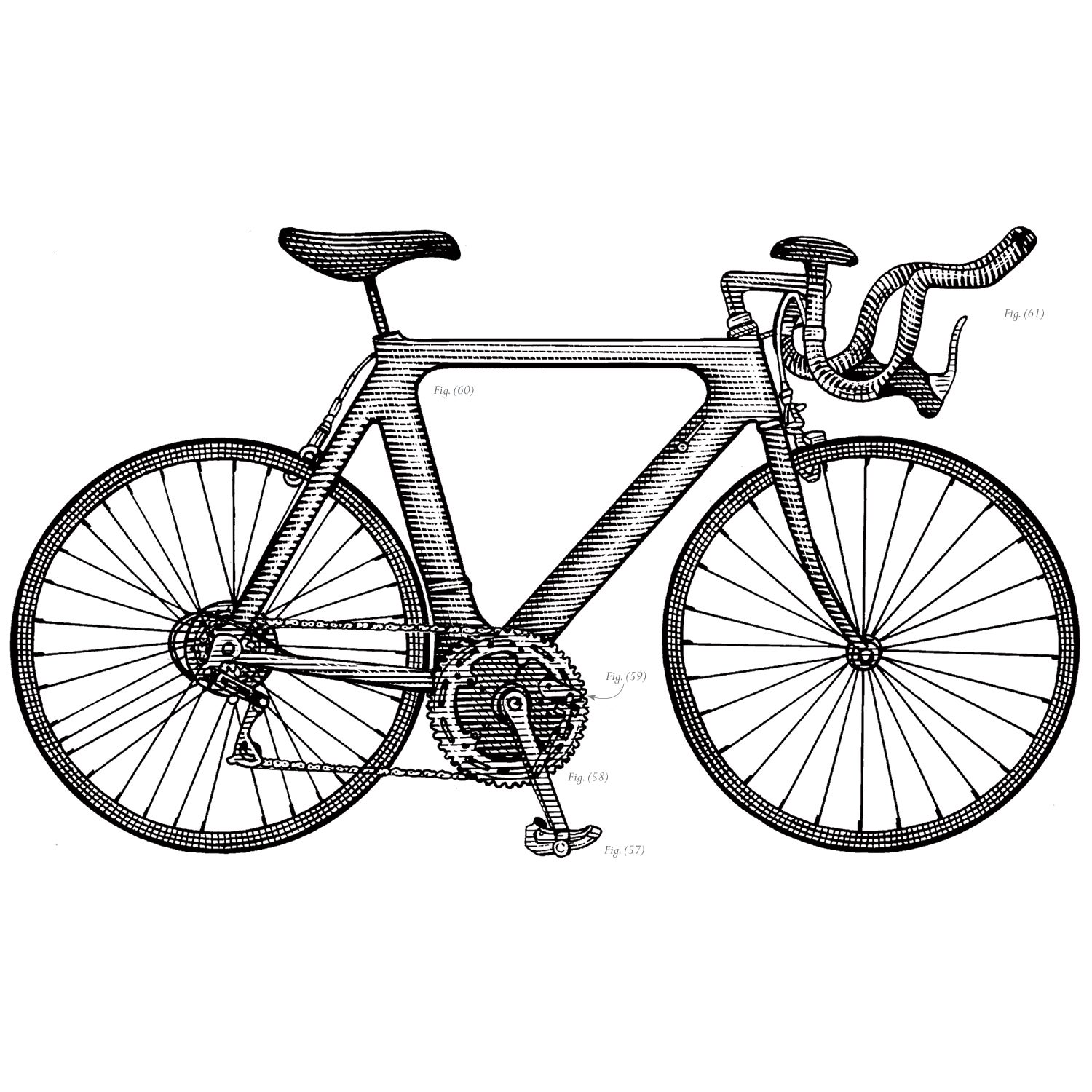A rapid sequence of radical innovations, such as appeared in cycling between 1984 and 1987, the sport’s Age of Enlightenment. The following advances, all of which debuted within the same four-year span, permanently altered how we ride.
Look PP65 clipless pedals (1984)
Fig. (57)��
Look didn’t invent the clipless pedal (a rudimentary version arrived in 1885), but the PP65 was the first big improvement in foot platforms since the turn of the century. Its genius was to borrow from ski-binding technology, allowing for safer entry and exit. Prior designs required riders to reach down and fumble with a locking mechanism, causing crashes. Bernard Hinault won the 1985 Tour de France while mashing PP65s, leading to their widespread adoption.��
Shimano SIS drivetrain (1984)
Fig. (58)��
After the 1950 debut of the Campagnolo Gran Sport—the first modern derailleur—gear shifting remained a primitive technology for another 34 years. A frame-mounted lever pulled a cable and shifted the derailleur position on the gears, but if you under- or overshifted, the chain would skip. Shimano Index System (SIS) perfected the design of indented clicks that pull a fixed amount of cable and move the derailleur into alignment. Without index shifting, there would be no STI, the integrated braking and shifting levers used today on road and mountain bikes. There’d also be no electronic shifting, which could one day make mechanical shifting obsolete among serious cyclists.
SRM power meter (1986)��
Fig. (59)��
In 1986, when athletes were still adapting to heart-rate training (see Heart-Rate Monitor), German engineer Ulrich Schoberer realized his vision of attaching strain gauges to a bike’s drivetrain to measure a rider’s real-time power output. In contrast to heart-rate numbers, power data is uncorrupted by variables like terrain, weather, or a hangover, allowing for more precise information to craft workouts. The SRM led to the biggest advances in training design since the interval.
Kestrel 4000 (1986)
Fig. (60)��
Who built the first production carbon-fiber bike? The answer to this bit of bar trivia is—wait for it—Exxon. The oil giant’s 1975 Graftek, essentially a PR-motivated science project, was cycling’s first foray into the magical material, but since Exxon didn’t really care about sporting goods, its novelty item quickly disappeared. A decade later, Kestrel set the mold for almost every carbon bike to follow. ��The fat-tubed 4000, adopted by triathletes, challenged conceptions of what a bike should look like and hinted at today’s aerodynamic shapes. Trek’s traditional-looking tube-and-lug 2500, which appeared the same year, introduced carbon to a mass audience.
Scott DH aerobars (1987)��
Fig. (61)��
Scott’s Boone Lennon, a former U.S. Ski Team coach, created the first handlebars to approximate a downhill ski racer’s aero tuck—hence the DH—and reduce drag. They were designed for triathletes, but two years later Greg LeMond showed up with aerobars (and a futuristic-looking aerodynamic helmet) for the final time trial of the Tour de France—and erased a 50-second deficit to bring home the maillot jaune. The lesson: if you don’t have aerobars, you’ll be outclassed in any race against the clock.
See Change
Cycling isn’t the only sport to experience a period of hyperspeed advancement.
Skiing:��1995–1998, 2002–2007
In 1995, ski manufacturers introduced sidecuts (called parabolics), allowing riders to carve turns more easily. In the following decade, free-skier Shane McConkey rode superwide boards with reverse camber (called rocker)—kicking off the era of powder-hungry fat skis.
��
Running: 2005–2012
Vibram debuted its glove-like FiveFingers, Born to Run became a bestseller, and suddenly every company in the industry was making minimalist shoes that let runners feel the ground beneath their feet.��
Paddleboarding:��2010–Present
SUPs took off when companies realized they could sell them to inlanders. Though there are still just two basic kinds—V shaped for speed, U shaped for stability—designs now exist for everything from navigating white-water to racing to multi-day expeditions.��


